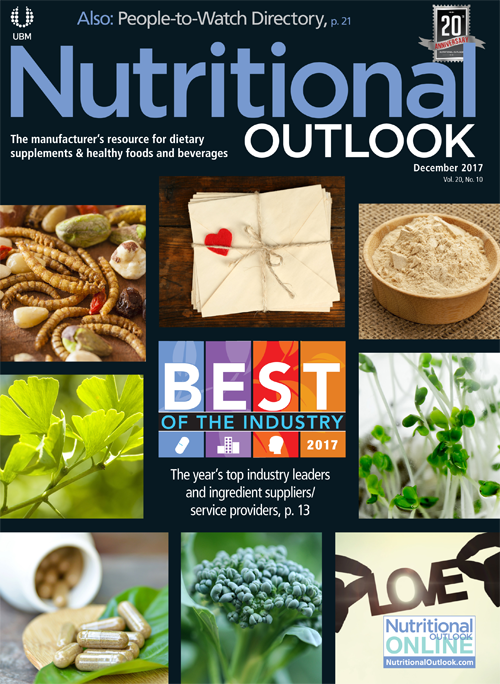Nutritional Outlook's 2017 Best of the Industry, Ingredient Supplier/Service Provider: Bühler Insect Technology Solutions
Embracing an alternative-protein future.
Photo © Shutterstock.com/marekuliasz

With the global population set to reach 9.8 billion by the year 2050, and land and water resources already strained, the issue of protein supply is likely to become a major concern for consumers and suppliers alike. One alternative protein source that has the potential to provide for the long haul is insect protein. Insects-both as human food and livestock feed-have long been a staple in many countries, but here in the United States, insects are still largely the province of adventurous travelers and experimental foodies. That may soon be changing.
In January, processing technology firm Bühler (Uzwil, Switzerland) and insect-ingredients producer Protix Ingredients, partnered to create Bühler Insect Technology Solutions (Liyang, China), a joint venture that aims to address the looming protein-supply problem. In June, Bühler Insect Technology Solutions announced plans to build its first industrial-scale insect-processing plant in the Netherlands. Currently, its focus is on the larvae of the black soldier fly “because it grows quickly, has a short development cycle, is able to recycle protein from a large variety of feedstocks, and is relatively easy to rear in large numbers,” says Andreas Aepli, CEO, Bühler Insect Technology Solutions. He adds that the company’s R&D department is also looking at other potential insect sources that can efficiently develop protein and other nutrients and that are “suitable for mass rearing.” The plant is projected to be the largest industrial insect-processing plant in Europe.
Aepli says that the investment shows that the company is committed to tackling sustainable insect-protein production and raising awareness about the benefits of insect protein. He explains: “On the feed side, we are actively promoting insects both as a new protein source and as an option to valorize side streams to our clients, both through information as well as trials.”
Regarding insects as food, he says, “the largest impact can be made by companies focusing on the development and marketing of attractive insect products.” Aepli points to protein bars and pasta as prime product categories in which to integrate insect proteins. “We are in touch with many of these companies and try to support their efforts from a producer’s point of view,” he adds.
What it comes down to, in the end, is the not-so-simple issue of supply and demand. “In order to feed nine billion people by 2050,” Aepli says, “we need to increase our total protein production by about 50%, which cannot be accomplished with our existing food and agricultural resources.” According to Aepli, this means one of two things: that most of the world’s population will need to embrace a vegetarian lifestyle-and fast-or, that we need to find alternative protein sources. “Insects,” Aepli explains, “specifically the ones we focus on, need the least amount of water, energy, and space to produce animal proteins. In addition, they can also help recycle a lot of the organic byproducts that today are put in landfills, burned, or otherwise turned into little value.”
The benefits of a six-legged protein supply don’t end there, says Aepli. Beyond being a high-quality source of protein for humans, they can also be used in animal feed. This is an especially promising category for introducing the concept of insects as protein while the idea of eating insects marinates among consumers.
“While directly eating insects may be the more sustainable option in the long term,” Aepli says, “it will take more time until customers have gotten used to and like this new food source.” Feed, meanwhile, has two advantages: first, it’s a bigger market, accounting for 60% of primary proteins. Second, he says, “insect protein meal and oils can replace existing ingredients such as fish meal and coconut oil in feed formulations with little adjustments, making adoption a lot more likely.”
For now, the company is focused on scaling up and establishing a network of partners and a fully functioning supply chain, Aepli says. Ultimately, he adds, the goal is “to make insect-producing technology available for all companies that can benefit from it…rolling out 30 or more plants per year-that’s the number required if we want to make an impact in our food system and realize the potential that insects hold.”
Other 2017 winners:
Nutritional Outlook's 2017 Best of the Industry, Ingredient Supplier/Service Provider: Lycored

Prinova acquires Aplinova to further increase its footprint in Latin America
April 7th 2025Prinova has recently announced the acquisition of Brazilian ingredients distributor Aplinova, which is a provider of specialty ingredients for a range of market segments that include food, beverage, supplements, and personal care.





















